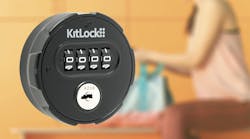Analysts say the demand for access controls and other electronic security systems is expected to rise by an average of 7.8 percent per year to $15.6 billion in 2012, according to a recent report issued by The Freedonia Group.
Despite a long-term trend of falling crime rates, there is still a high perceived risk of crime, which in addition to technological improvements and falling prices of many high-end electronic security components, stand to bolster sales.
According to Jennifer Mapes, the industry analyst from The Freedonia Group who authored the "Electronic Security Systems" report, the commercial security sector is expected to post larger gains than the residential market.
"The non-residential markets are expected to post stronger gains through 2012 because of cyclical factors, as well as the development of less expensive and better functioning systems and concern over the adequacy of security safeguards in these settings," said Mapes. "However, the consumer [residential] market is expected to post a strong recovery from the slower rate posted from 2002 to 2007 as new housing construction, a key driver of consumer security spending, is forecast to rebound from a low 2007 base."
Because of technological innovations that make them less susceptible to forgery and easier to use, access control business solutions are expected to see the largest growth over the next four years, an estimated 11.9 percent.
"Among the factors driving growth in demand for access control is consumer interest in automating security functions and shifting away from manned security," said Mapes. "Gains will also benefit from the ongoing development and introduction of higher value systems with specialty technologies that result in improved performance through greater screening accuracy, and remote updating and other operational capabilities. Additionally, advances will be spurred by the increasing popularity of smaller systems that are available at lower prices, making access control systems increasingly affordable, even for smaller entities such as day care centers, elder care facilities and small offices. The declining cost and improving performance of biometric systems will boost gains on the high end."
Though the demand for contraband detection systems saw a spike following the terroristic attacks on Sept. 11, they will see only a 6.9 percent increase over the next several years according to the Freedonia forecast. Gains in that part of the industry are expected to stem from technological upgrades that will more quickly allow accurate screening.
"The technological upgrades allow for better detection of more types of contraband with fewer false positives and fewer misses," Mapes explained. "Demand for contraband detection systems is being reduced as the market penetration of these systems increases, particularly in the airports, the leading market."
Above average gains are projected in the industrial, offices and lodging, financial institutions and services sectors, due to a combination of cyclical factors and concerns over the adequacy of current security safeguards. In 2007, the government and institutional market accounted for the largest share of electronic security system sales (outside of the consumer/residential market) with 17 percent. However, the industrial market is expected to post the strongest average annual sales growth through 2012.

